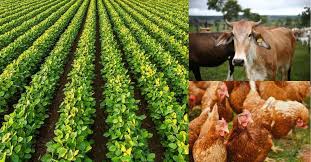The cooperative enterprise originated in the 19th century and has since become a prominent example of business and economic enterprise globally. Cooperatives operate in nearly all countries and under various political systems, ranging from communism to capitalism.
Most of these cooperatives, through their national apex organizations, are affiliated with the International Cooperative Alliance (ICA), which serves as the representative global body for all cooperative movements. The motivation to form cooperatives centers around three key aspects:
1.The need for protection against exploitation by economic forces too strong for individuals to withstand alone.
- The drive for self-improvement by making efficient use of often limited resources.
- The desire to secure the best possible returns from any form of economic activity in which individuals are engaged, whether as producers, intermediaries, or consumers.
The belief that these aspirations are best achieved through collective efforts with like-minded individuals often drives cooperative action. The fundamental principles underlying cooperative enterprises include self-help, voluntary participation, equity, democracy, and a shared bond of need and purpose. The cohesion of the group is maintained by ensuring that individual members do not gain power or advantages at the expense of others.
Cooperatives reward participation in the venture rather than capital investment. Thus, self-interest remains a primary motivator, with economic gain being a key objective.
In developing countries, the cooperative movement has become an integral part of the rural economy, where subsistence farmers pool their resources for mutual benefit.
In many of these economies, small farm holdings and limited resources hinder farmers from earning sufficient income. To address the pervasive poverty in these regions, individual farmers and rural organizations have embraced the concept of cooperative enterprises.
By pooling their resources, they can collectively purchase farm inputs and market agricultural products, thereby benefiting from economies of scale and other incentives provided by cooperative enterprises.
Read Also: Sheep gene insights could help farmers breed healthier animals
Structure and Organisation of Cooperatives in Agricultural Marketing

There are two main forms of cooperative enterprises: primary cooperatives and secondary cooperatives. The basic unit in the cooperative system is the primary cooperative, where individual shareholders each hold an equal share in its control.
1. Control and Management of Primary Cooperatives
The control structure of primary cooperatives consists of three tiers. The General Meeting of Members sets policies, allowing members to exercise control.
In most countries, there is a legal requirement for an Annual General Meeting (AGM), which has the responsibility of receiving and deciding on an audited statement of accounts, determining how any surplus should be distributed, and electing a committee.
The General Meeting of Members delegates operational control to a management committee (or board of directors), which oversees the cooperative’s activities on behalf of the members.
One member of this committee is elected Chairman or President. A Manager (or Secretary) is appointed by the management committee as the chief administrative officer of the cooperative, responsible for the day-to-day management of the business.
2. Control and Management of Secondary Cooperatives
The control and management structure of secondary cooperatives is similar to that of primary cooperatives. The primary cooperatives, as shareholders, exercise policy control through a General Meeting, where a management committee is elected to act on their behalf. This committee then appoints a chief officer to manage the cooperative’s operations.
The bye-laws of secondary cooperatives, as with primary cooperatives, set down the organizational rules and procedures, subject to the approval of the local authorities.
The operating surplus of a secondary cooperative is also used and distributed in accordance with the same principles as in primary cooperatives. The primary role of secondary cooperatives is to provide services to member cooperatives.
Read Also: 17 Medicinal Health Benefits Of Mucuna pruriens (Monkey Tamarind)
The Economic Potential of Cooperatives in Rural Development

The economic potential of cooperatives is vast. Cooperatives are well-suited to the economic, social, and institutional needs of rural development. They offer a mechanism for organizing and mobilizing people for self-help efforts, providing essential services for farming and rural communities.
As self-governing rural institutions, cooperatives have the capacity to address the needs of their members while fostering attitudes of self-reliance and mutual action.
By delivering services to their farmer-members, cooperatives provide critical support for both the development goals of individual farmers and national development policies.
Through their involvement in agricultural marketing, cooperatives enhance the economic well-being of rural areas, promoting growth and sustainable development.
Do you have any questions, suggestions, or contributions? If so, please feel free to use the comment box below to share your thoughts. We also encourage you to kindly share this information with others who might benefit from it. Since we can’t reach everyone at once, we truly appreciate your help in spreading the word. Thank you so much for your support and for sharing!
Read Also: 4 Steps to help an Orange Tree Produce Sweet Oranges

